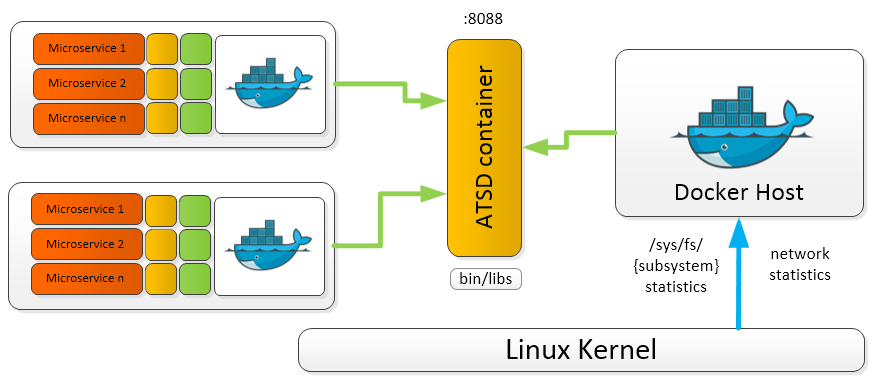Docker Networking Connecting Containers in a Microservices Architecture
In the fast-paced realm of modern software development, microservices have become the favored approach for building complex applications. These bite-sized, independent software components are designed for agility and scalability. With their nimbleness and portability, Docker containers are the perfect vehicle for deploying these microservices.
However, when it comes to microservices, there’s an essential element that often operates behind the scenes: networking. Docker networking is the mechanism that allows these small, discreet containers to communicate with each other within a microservices architecture seamlessly. When it comes to microservices, networking becomes a crucial aspect.
The Building Blocks: Containers and Microservices
Before we dive into Docker networking, let’s understand the basics. Containers are like tiny, self-contained applications. They include everything they need to run, from the code to the libraries and dependencies. Microservices are an architectural approach that divides complex applications into more minor, independent services that can be developed and deployed separately.
Why Docker Networking Matters in Microservices
In a microservices architecture, applications are no longer monolithic entities but are broken down into more minor, independent services or microservices. Each microservice handles a specific function, such as user authentication, order processing, or payment handling. These microservices often run in their own Docker containers. While this approach offers significant benefits regarding scalability, agility, and ease of maintenance, it introduces a critical challenge: communication.
Microservices need to talk to each other to deliver a complete application. Microservices might run on different containers, perhaps even on different machines or servers. Communication between microservices, regardless of physical location, happens over a network.
In core, networking in microservices is the digital highway that enables the exchange of data and commands between these services. Without effective networking, microservices remain isolated islands, rendering the concept of microservices architecture ineffective.
Therefore, in a microservices architecture, networking isn’t just important; it’s mission-critical. Docker networking is the technology that makes this complex web of communication possible. The digital switchboard connects each microservice, allowing them to work together as a cohesive unit.

Understanding Container Networking Modes
Docker offers different networking modes, each suited for different scenarios:
- Bridge: This is the default network mode for containers. It allows containers to communicate with each other on the same host. It’s like containers in the same boat talking to each other.
- Host: In this mode, containers share the network namespace with the host. They can communicate directly with the host’s network, making it fast but less isolated.
- Overlay: This mode is for connecting containers across different hosts. It’s like building a bridge between two boats to communicate even on different rivers.
- Macvlan: It gives containers their own MAC and IP addresses. It’s like each container has its separate phone number.
- Custom: You can create your custom networks with unique properties.
Leveraging Auxin’s AlphaK8 for Enhanced Microservices Networking
In the dynamic world of microservices networking, Auxin’s AlphaK8 emerges as a game-changer. This security platform, designed for agentless continuous Kubernetes development, seamlessly integrates with Docker networking to streamline and secure microservices communication. By offering real-time insights into network traffic and vulnerabilities, AlphaK8 ensures that microservices interact safely and efficiently.
The best part? AlphaK8 is accessible to all, with free access upon sign-up. Dive in to explore its robust features and confidently bolster your microservices networking. In this ever-evolving landscape, AlphaK8 empowers you to navigate the complexities of microservices networking efficiently.
Wrapping-Up
Understanding Docker networking within a microservices architecture is a technical necessity and a strategic advantage. The invisible force ensures these independent, nimble microservices work together seamlessly. Docker networking simplifies complex communication and empowers developers to build agile, scalable, and robust applications in the face of ever-evolving challenges. The emergence of security platforms like AlphaK8 from Auxin reinforces the significance of robust networking in microservices.
With real-time insights and agentless continuous Kubernetes development, it’s clear that the future of microservices networking is brimming with innovation. As we continue down this path of microservices and Docker networking, remember that our ability to comprehend, adapt, and leverage these technologies will set us apart. It’s not just about connecting containers; it’s about uniting the diverse elements of modern software development into a symphony of functionality.







